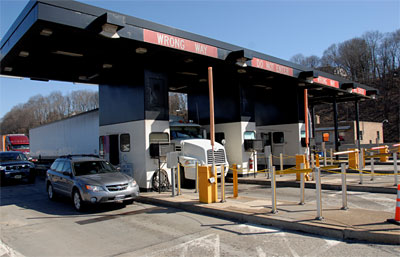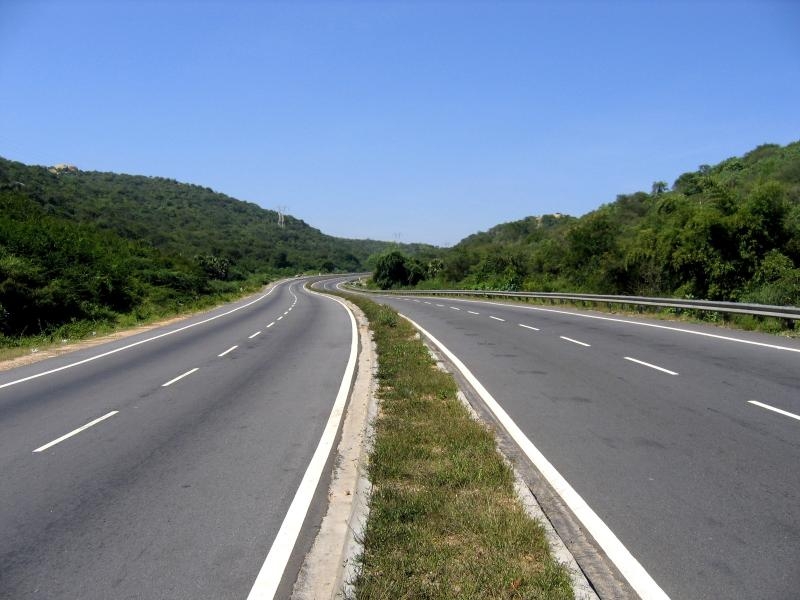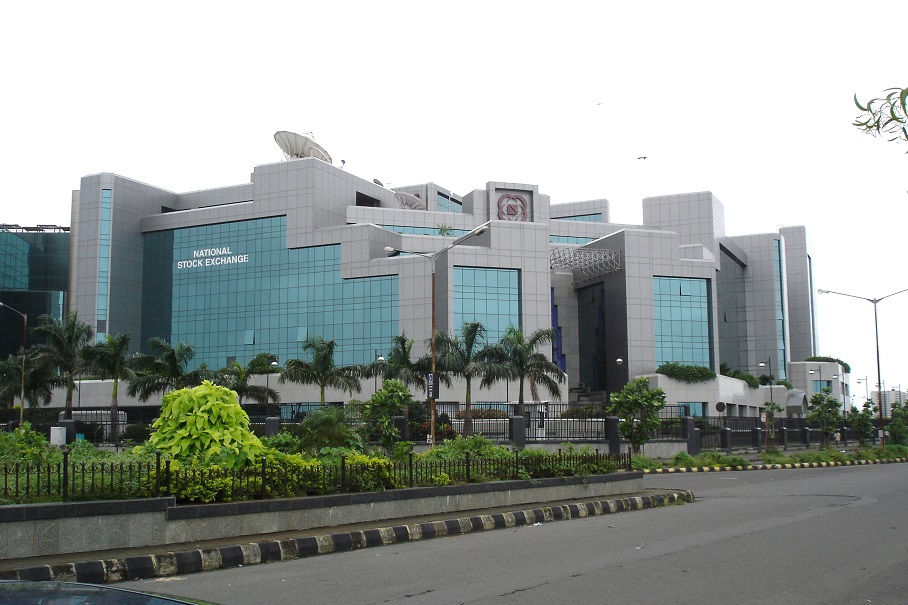Empowering Smart City citizens with a twist
August 30, 2016
Jaskirat Singh, Founder, Webrosoft, was nominated at the Start Up, Stand Up India competition held in New Delhi earlier this year. The company’s Citizens’ Reporting and Mapping Tool (CRAMAT), as the name suggests, puts more power in the hands of the ordinary man.
Excerpts from an interview :
How did the idea for CRAMAT come about?
Three years ago, we were trying to solve a problem in south Punjab relating to cancer. Someone wanted to do a survey of cancer patients and plot some parameters with water quality samples on a map just to see if there was a correlation between the water and where the patients were living. We thought we’d give it a try. After a few months, we had created a special camera app that could take pictures and display the location and time. This way, we could ensure the accuracy of the location. This was the beginning. We realized this could also be used for other purposes and took it to the commissioner of Ludhiana. We told him we could change the parameters of what we are tracking from water samples to roads, street lights or anything else and that even citizens could use this to report civic problems. He was very excited and we launched in Ludhiana the next week. We then started pitching it to other cities. This is how it all started.
That’s a nice story.
Yes it is, isn’t it? How we then became associated with infrastructure was when our Ludhiana commissioner said the app was proving very useful with citizens using it to report problems quite enthusiastically. However, he said the bigger problem was that the grievances were not looked into properly (the basic problem with the Government). He also requested us for a project tracking system for road and bridge projects. If an app could be installed on the phones that the engineers carried, the commissioner would not have to go around the city to monitor or track different projects but see reports from his office. That is how we started projects for the municipal commissioner of Ludhiana and this was our first involvement with infrastructure. We realized this was good business and then decided to seriously work on the app to develop it even further.
After this, you started pitching to other cities?
We were now pitching the app for three things. One was infrastructure since all of them were now doing development and maintenance. Citizens’ grievance was the second one. The third thing which a few cities are also using is our app for attendance and monitoring civic personnel. This includes things like whether the sweepers have arrived on time, swept their area clean, etc.
So, it’s really a smart app, ideal for India’s Smart Cities project.
Our app started before the mission was announced and even before this government came to power. However, we realized we should use this buzzword once it came about since our app is actually a Smart City solution. So why were we not saying it? Therefore, the marketing strategy has been realigned and fits the current context well.
How many cities does the app cover?
There are different use cases. We have about 100 cities covered for grievance reporting. For infrastructure tracking, we are in two cities. For attendance monitoring in the waste management area, we are in two cities. Every city has at least a few hundred secondary dumping points and from there, it goes to the bigger dumping grounds. Tracking and monitoring is important as it is a citizen-centric issue.
What are the plans to expand your coverage?
We are thinking of merging these three into a single product. Although these three things sound very different, we are mostly targeting civic authorities. We’d like to put them into a package. We are also planning to pitch to the Union Government since that may help us find a faster route to pitch to the local governments. The biggest problem with local governments is they take at least six months to understand and take it to the next level for approvals. Unless this comes from higher up, it is slightly difficult. The Central Government is very gung-ho on Swachh Bharat and Smart Cities, so I am hoping for a push from there.
It should be easier for you now that you were nominated for this award…
I hope so but I am not in a position to pre-empt the Government and what it may do! We are trying at all levels, wherever we are getting access.
Have you looked at the cities chosen for the Smart Cities mission in the first phase?
Yes. Very interestingly, some of them have got in touch with us because those who are in the vicinity where we operate have obviously come to know about us. Some of them actually wanted to launch it before their deadline to show they had already implemented it! So, I am very hopeful because it looks like governments are waking up to technology. The push has come from the Central Government schemes. Swachh Bharat and Smart Cities have really helped, big time.
How would you classify what this app does?
In India, I do not know if there is anything like this. However, in the US, similar companies are categorized under civic technology. We feel we are closest to that.
How many downloads so far?
About 40,000 so far.
Don’t you think it should be more?
It is more than 100 cities, of course, with three cities in Punjab (Ludhiana, Mohali and Hoshiarpur) and over 100 cities in Karnataka. Karnataka was launching their m-governance platform last year and found this product suited them well. The MoU was signed with the state government and we launched it. However, after the complaints started rolling in, the problems arose because as so often happens with government, they weren’t prepared to handle all these complaints!
So, what is the way forward? Are you hopeful of more customers?
Yes, of course. While governments are slightly difficult customers, the problem is worse for us as a start-up. There are issues with cash flows and governments are not known for paying on time or even with a reasonable delay. Even ‘reasonable’ is not really anywhere within reason. However, the government is a very credible customer and it looks good in our portfolio. But we still need cash flows and are also targeting the private sector.
How do you envisage a model with the private sector as water, waste management, etc., are all state subjects?
We have a private sector customer already. The municipal corporation of Mohali wanted to track their cleaning personnel and floated a tender for a private player to sweep their roads. To ensure their money was spent on the work for which it was intended, they mandated the company to provide a tracking mechanism. So, we’re now a subcontractor for that company and we found that this was much better. Someone actually appreciated our work, paid us on time and listened to our problems and gave us opportunities to optimise things.
Cabinet approves 1120 km of National Highways in 5 states
August 30, 2016
The Cabinet Committee on Economic Affairs (CCEA), which is chaired by Prime Minister Narendra Modi, has approved development of 1,120 km of National Highways in the five states of Karnataka, Odisha, Bihar, Rajasthan and West Bengal. The revised cost is estimated at Rs 6,461 crore including cost of land acquisition, resettlement and rehabilitation and other pre-construction activities, according to an official statement.
CCEA said while the proposal was initially approved for Rs 5,193 crore, the cost has increased due to higher bid prices and increase in cost of land acquisition, resettlement, rehabilitation and the pre-construction activities. The projects are already taken up for implementation and 429 km has been completed. The civil works are expected to be completed by July, 2019 and maintenance works are expected to be completed by July, 2024.
The work for development to two-lane standards are under Phase-I of the National Highways Interconnectivity Improvement Project (NHIIP) with World Bank assistance. “The project will ensure safe, fast and all-weather movement of traffic on the proposed national highways mostly located in backward regions, thereby improving socio-economic development,” the statement said.
The postmodern alteration of the BKC
August 29, 2016
From swamp to swank, the transformation of Bandra Kurla Complex (BKC) is fast nearing completion. Now dotted with high-rises and a flurry of (still) ongoing construction activity, these are starkly juxtaposed with adjoining slums and remaining marshland. Not for much longer. If the planning authority for the area – the Mumbai Metropolitan Region Development Authority (MMRDA) – has its way, it will soon auction another plot of land measuring 12,500 square metres for more development (currently there is a ban on all new construction in the city by the Bombay High Court). Meanwhile, three ambitious elevated road projects as well as two flyovers have been planned to improve connectivity. Construction is already underway for some of these.
“Moreover, with the second and third metro lines planned for Mumbai, we are looking at the possibility of getting these two lines to intersect at BKC. This will be an underground station. That would make BKC accessible from almost all areas of Mumbai as well as improve last-mile connectivity to BKC,” UPS Madan, MMRDA metropolitan commissioner, said in a press conference. It’s just as well. On the drawing-board for decades, all of these projects need speeding up. Otherwise, says Ramesh Nair, COO, at property consultant JLL India, “BKC will lose its attractiveness. With all the modern construction there today, a new building of a million and a half square feet means 15,000 more people coming into the area in cars, trains and buses. The government has to fast-track these infrastructure connectivity projects,” says Nair.
Meanwhile, aware of the transport bottlenecks and the lack of last-mile connectivity to BKC, it is the property developers in the area who have come up with a novel solution. Radius Developers’ ONE BKC which houses companies such as Bank of America and Brookfield, among a host of other blue-chip companies, has tied up with Mumbai’s BEST buses to ferry all workers in the building in air-conditioned buses at specified, regular intervals from nearby railway stations to the office and back, both morning and evening. “Until the time we can compare ourselves to Shanghai or to Hong Kong, all these investments have to be made,” says Ashish Shah, COO, Radius Developers.
With so much happening, Madan is cognizant of the need to alter regulation to allow for residential development. In fact, rules have just been amended to allow residential development in up to 30% area of a commercial plot. “There is a need for mixed use also,” says Madan. “In a residential plot, we will permit commercial activity in the first two floors such as shopping, restaurants and showrooms that blend well with the gentry and make it a lively place 24*7, rather than between only 9 am and 6 pm, which is the situation currently. At night, on holidays and weekends, there should be something happening. That’s the whole idea.”
All this has prompted property developers to keep a hawk’s eye on the situation. Driven by the high-grade, white-collar demand, Himanshu Kanakia of Kanakia Group says he is looking to build more residential projects and will make a bid when MMRDA auctions more land. TEN BKC by Radius Developers and Rustomjee Seasons by Rustomjee, on the fringes of the business district, both under construction, boast a client’s list that reads like a veritable who’s who of the corporate and the financial world. With the International Financial Services Centre (IFSC) envisaged to come up here, it’s no wonder corporate head honchos are settling in for the long haul. Managing directors, CEOs, partners and principals at top private equity firms, vice presidents and country heads have all purchased apartments in these modish complexes.
With well-laid out social infrastructure already in place – clubs, hospitals, hotels, schools – the positioning is such that one would not need to leave BKC, says Nikhil Bhatia, MD, Capital Markets and Head, Western Region, CBRE South Asia. “This is a micro-market that is becoming increasingly very self-contained. I think this is going to be a global financial hub equivalent to anything we have seen in Asia. BKC 2020 is going to have a very different look and feel to it.”
L&T to convert Nagpur into country’s first large-scale integrated Smart City
August 19, 2016
Heavy engineering and construction major Larsen & Toubro has been chosen by the Maharashtra government to convert Nagpur into the country’s first large-scale integrated Smart City. In the first phase, L&T’s Smart World & Communication business vertical, which is a part of L&T Construction, will cover laying of 1,200 km of optical fiber network backbone in the City of Oranges, creating 136 city wifi hot-spots at key locations, establishing 100 digital interactive kiosks and developing city surveillance systems with 3,800 IP-based cameras.
Further, as an avant-garde endeavor, the city has identified a strip of approximately 6 km (from Japanese Garden Square to Orange City Hospital Square) to be developed as a ‘Smart Strip’ with state-of-the-art systems powered by smart ICT interventions like smart transport, solid waste management, smart lighting, etc. This is to be leveraged in a phased manner to ultimately cover the entire city.
“After Jaipur, this is the most significant step in the country’s journey towards establishing smart cities and we are delighted to be participating in transforming Nagpur into one,” said S N Subrahmanyan, Deputy Managing Director and President, Larsen & Toubro. “As a master systems integrator, we will provide leading-edge technology solutions including high-end analytics, mobile surveillance and high-tech tools like drones,” he added. L&T’s Smart World business has executed the smart city project in Jaipur and is executing India’s largest city surveillance project comprising 6,000 cameras across 1,500+ locations in Mumbai. Projects are also underway in Delhi, Lucknow and Hyderabad, the company said.
Road Projects worth INR 37000 Cr coming up in the North-East
August 16, 2016
The government has informed law makers that there are 197 road projects that are being developed in the North Eastern region of the country under the watch of Ministry of Road Transport and Highways (MoRTH). The total length and sanctioned cost of these projects are 4320.95 km and Rs 37691.05 crore respectively. This was stated by Jitendra Singh, minister of state for Development of North Eastern Region in a written reply in the Rajya Sabha. “Government is, in fact, giving special attention to infrastructure development projects, such as, road, rail, communication, and telecom network in the North Eastern Region,” the Minister said in his statement.
Apart from the road projects, 20 major railway projects comprising 13 new lines with a length of 2,624 km, costing Rs 52,030 crore have also been taken up in the North Eastern Region. “An expenditure of Rs 2,1336 crore has been incurred on these projects up to March, 2016. An outlay of Rs 5,040 crore has been provided for 2016-17 for these projects and for the residual liabilities of some completed projects,” the minister informed the members.
In addition, the North Eastern Council (NEC) is implementing 715 various developmental projects in North Eastern States, which are under way at a total approved cost of Rs 7,14,864.98 lakh. Ministry of Rural Development is providing assistance to respective state governments under the Pradhan Mantri Gram Sadak Yojana (PMGSY) programme.
IIT-KGP to suggest technology for maintenance-free highways
August 16, 2016
Maintenance of the country’s national highways for a longer period could get a new lease of life with the prestigious Indian Institute of Technology-Kharagpur set to embark on an ambitious project which will suggest technologies for maintenance-free highways. The step is also seen as environment friendly as it will need lesser natural resources. At present, the construction of these highways requires a monolithic (in-situ) layer of cement concrete normally 300 mm thick, laid continuously over the prepared surface. The idea is innovation of technology to optimise the design of concrete pavement in its traditional form which can facilitate faster construction at much cheaper costs.
The National Highways Authority of India (NHAI) and IIT-Kharagpur signed a pact recently for a research project to develop a technology to construct long-lasting maintenance-free highways in the country. “The duration of the research project is three years and NHAI has paid Rs 1.25 crore for the project, excluding cost of construction of trial pavement section,” NHAI said. NHAI and IIT Kharagpur will develop a technology to construct Panelled Cement Concrete (Pre-fabricated in a small panel size) which can replace the design of construction of existing cement concrete road.
The common experience in the national highways are that it is prone to damage and needs frequent maintenance due to adverse climatic conditions such as rain and hot weather since they are generally paved with bituminous (asphaltic concrete) material produced from refineries. To overcome this problem, the government has recently announced a policy for the construction of concrete pavements for all major highways due to their longevity and maintenance-free life. “The paneled concrete pavement laid on a lean concrete base can fulfill the Government of India’s dream of providing long-lasting maintenance-free pavements at a cost at par with those of asphalt pavements,” NHAI said.
ICICI to issue 4 lakh ETC tags by March 2017
August 10, 2016

ICICI Bank – the largest private sector lender of the country – aims to issue four lakh electronic toll collection tags by March 2017. The private sector lender is the first to launch and implement an inter-operable Electronic Toll Collection (ETC) platform on national highways. The bank is also targeting to record three million transactions by the end of the current financial year. The bank has made ‘Electronic Toll Collection’ live at 343 toll locations across major national highways of the country, which covers over 90 per cent of the tolled national highway network.
Chanda Kochhar, MD & CEO, ICICI Bank said, “Currently, we have made this service live across 343 toll locations in the country, thus covering over 90% of the tolled national highway network. We are closely working with the Road Transport & Highways Ministry, NHAI (National Highway Authority of India) and IHMCL (Indian Highways Management Company Limited) to cover more highways under ETC in the near future.”
“ICICI Bank is delighted to be associated with the implementation of Electronic Toll Collection (ETC) on national highways. We were the first bank in the country to launch this innovative service and have successfully set benchmarks that are now being leveraged to create national standards for inter-operability between all banks,” Ms Kochhar added. Overall, ICICI Bank has issued over 30,000 FASTags which are currently in use for electronic toll collection. The bank was the first to launch this service on the Mumbai – Vadodara corridor of NH8 in 2013.
FASTag is a simple to use, reloadable tag which enables automatic deduction of toll charges and lets you pass through the toll plaza without stopping for the cash transaction. FASTag is linked to a prepaid account from which the applicable toll amount is deducted. The tag employs Radio-frequency Identification (RFID) technology and is affixed on the vehicle’s windscreen after the tag account is active. A vehicle with the ‘FASTag’ can use the dedicated lanes on either side of the toll plaza to avoid long queues in the cash lanes of the toll plazas.
Hybrid Annuity Model makes inroads into BOT projects
August 9, 2016
SNCF to move industrious train project under way
August 3, 2016
SNCF (National Society of French Railways), France’s state-owned railway company who are also the international consultants for the Delhi-Chandigarh semi-high speed train project, have completed the initial round of feasibility studies for the project. SNCF is also studying the way forward for the renovation of two stations – at Ambala and Ludhiana.
SNCF has prepared three options which have been presented to the Indian government. The priority in the first scenario was given to minimum investments while the second option focused on completing the train journey between Ambala and Chandigarh in just two hours. The third priority was given to a possibility where the train could achieve speeds of 200 kmph. With the preparation of the three scenarios, the end of the first phase of studies is complete.
SNCF’s Asia Director, Philippe Lorand, said that SNCF would now jointly work with the Indian government representatives to help them understand the different options and the associated costs with each option. “We hope that by the time of the second steering committee meeting by the end of September, Indian Railways will be in a position to select one of the scenarios with which they want to go forward and for which they would want us to prepare the documentation so that they could launch the tenders.” He added, “The work of the steering committee is not just to select one of the options but also to tell us how they want to tweak their requirements within the budgets they have.”
On the Indian side, the steering committee members are headed by Alok Kansal, Divisional Railway Manager, South Eastern Central Railway.
The study was financed both by France and India and launched in January. The background to this is the agreement signed between the two countries when the French President visited India in February 2013, and last year when Prime Minister Narendra Modi was in Paris in April.











